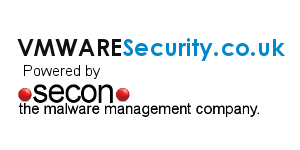


![]() A Look at Trend Micro Deep Security 7.5
A Look at Trend Micro Deep Security 7.5
Trend Micro Deep Security 7.5 has been available since VMworld 2010. The Anti-malware component requires VMware vShield Endpoint and at least VMware vSphere 4.1. Deep Security 7.5 adds quite a bit of functionality to the virtual environment. Being the first product to make use of the Endpoint Security mechanisms within VMware vSphere. Deep Security 7.5 provides a mechanism to move anti-virus out of each VM and into a single Deep Security Virtual Appliance. In addition, Deep Security 7.5 contains a firewall, IDS/IPS, web application protection, integrity monitoring, and log inspection from previous versions.
Virtualization and cloud computing have changed the face of today’s data center. Yet as organizations move from physical environments to a mix of physical, virtual, and cloud, many have addressed the prevailing threat landscape with yesterday’s mix of legacy security solutions. The results can actually threaten desired performance gains—causing undue operational complexity, leaving unintentional security gaps, and ultimately hindering the organization’s ability to fully invest in virtualization and cloud.
![]() Agentless Security for VMware
Virtual Data Centers and Cloud
Agentless Security for VMware
Virtual Data Centers and Cloud
From its early experimental applications in the 1960s and 1970s, virtualization was first seriously implemented as a way to control IT capital and operational expenditures through server consolidation. Then in 2005, when Intel and AMD introduced chipsets specifically to support virtual hardware, virtual environments started expanding into line-of-business applications, where they continue to deliver cost efficiency in IT production through resource consolidation. Today, reducing the cost of IT is consistently in the top list of concerns of CIOs. However, the benefits of virtualization go beyond the cost savings.
![]() Cost-effective Virtualization & Cloud Security
Cost-effective Virtualization & Cloud Security
Virtualization and cloud computing can help your organization achieve significant datacenter savings in hardware costs, operational expenditures, and energy demands—while achieving improvements in quality of service and business agility. Yet many organizations don’t realize that using their existing physical server security in virtual environments limits their ability to maximize their use of virtualization and cloud technologies. Even worse it leaves them exposed in ways they may not have anticipated—causing significant security gaps and even performance degradation during concurrent security operations. Trend Micro offers purpose-built virtualization security solutions designed to help you fully and safely utilize your virtualization environment.
![]() Virtualization Security - Achieving Compliance for the Virtual Infrastructure
Virtualization Security - Achieving Compliance for the Virtual Infrastructure
Vendors have been positioning their solutions by focusing on potential virtualization vulnerabilities. Yet that’s not what enterprises care most about. In fact, the overwhelming response to the vendor vulnerability message is “so what’s the big deal?” Instead, what’s top of mind for enterprise IT practitioners is compliance, yet most VirtSec vendors aren’t articulating the ways in which their products can help enterprises address compliance concerns. What’s not top of mind – and should be - is that virtualization makes the strong perimeter defense obsolete.
![]() Trend Micro Deep Security and VMware vShield Endpoint
Trend Micro Deep Security and VMware vShield Endpoint
Virtualized data centers, desktops, and cloud computing should be secured by the same strong protection technologies as physical machines. However, traditional agent-based solutions that are not architected for virtualization can result in a number of significant operational security issues. VMware and Trend Micro’s agentless security provides “better-than-physical” protection for virtual and cloud environments. A single platform integrates security technologies and resolves operational security issues.
![]() Changing The Game With Agentless Security For The Virtual Data Centre
Changing The Game With Agentless Security For The Virtual Data Centre
From its early experimental applications in the 1960s and 1970s, virtualization was first seriously implemented as a way to control IT capital and operational expenditures through server consolidation. Then in 2005, when Intel and AMD introduced chipsets specifically to support virtual hardware, virtual environments started expanding into line-of-business applications, where they continue to deliver cost efficiency in IT production through resource consolidation. Today, reducing the cost of IT is consistently in the top list of concerns of CIOs. However, the benefits of virtualization go beyond the cost savings.
![]() The Protection and Operational Benefits of
Agentless Security in Virtual Environments
The Protection and Operational Benefits of
Agentless Security in Virtual Environments
From its early experimental applications in the 1960s and 1970s, virtualization was first seriously implemented as a way to control IT capital and operational expenditures through server consolidation. Then in 2005, when Intel and AMD introduced chipsets specifically to support virtual hardware, virtual environments started expanding into line-of-business applications, where they continue to deliver cost efficiency in IT production through resource consolidation. Today, reducing the cost of IT is consistently in the top list of concerns of CIOs. However, the benefits of virtualization go beyond the cost savings.
Copyright 2013 Secon Solutions. All Rights Reserved. Website Terms Here
